BYD ETP3 vs Toyota C-HR – Differences & prices compared
Compare performance, boot space, consumption and price in one view.
Find out now: which car is the better choice for you – BYD ETP3 or Toyota C-HR?
The BYD ETP3 (Cargo Van) comes with a Electric engine and Automatic transmission. In comparison, the Toyota C-HR (SUV) features a Full Hybrid or Plugin Hybrid engine with Automatic transmission.
When it comes to boot capacity, the BYD ETP3 offers , while the Toyota C-HR provides 447 L – depending on how much space you need. If you’re looking for more power, decide whether the 136 HP of the BYD ETP3 or the 223 HP of the Toyota C-HR suits your needs better.
In terms of consumption, the values are per 100 km for the BYD ETP3, and 0.80 L for the Toyota C-HR.
Price-wise, the BYD ETP3 starts at 31600 £, while the Toyota C-HR is available from 29100 £. Compare all the details and find out which model fits your lifestyle best!
BYD ETP3
The BYD ETP3 is a versatile electric van that seamlessly blends functionality with environmental consciousness. Its modern design is complemented by a spacious interior, making it ideal for both urban deliveries and day-to-day personal use. Advanced technology features ensure a smooth and efficient driving experience, setting a new standard in the electric vehicle market.
details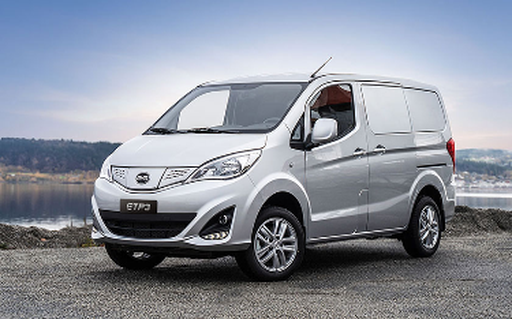 @ press.bydauto.be
@ press.bydauto.be
Toyota C-HR
The Toyota C-HR stands out with its distinctive and bold design that combines sleek, angular lines with a sporty posture. Its comfortable and stylish interior is equipped with advanced technology features, providing a seamless driving experience. The vehicle offers impressive handling and performance, making it a compelling choice for those who appreciate a blend of practicality and flair on the road.
details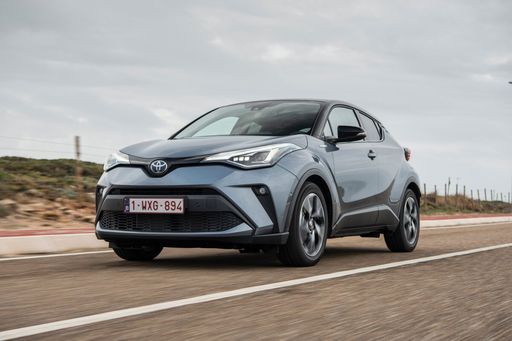 @ Toyota
@ Toyota
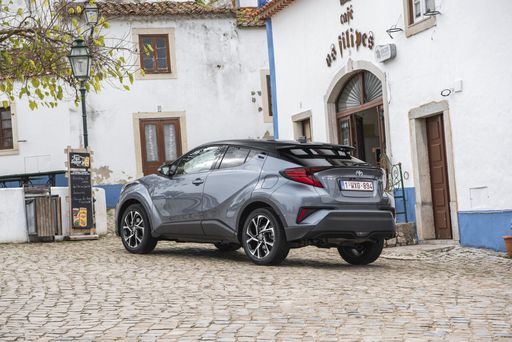 @ Toyota
@ Toyota
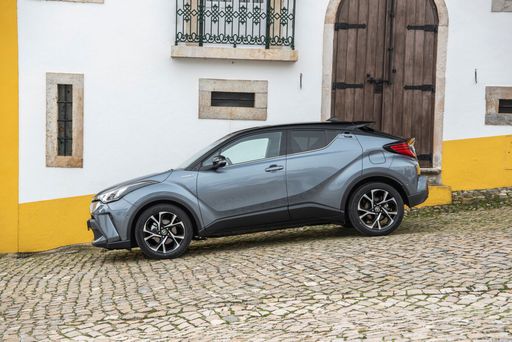 @ Toyota
@ Toyota
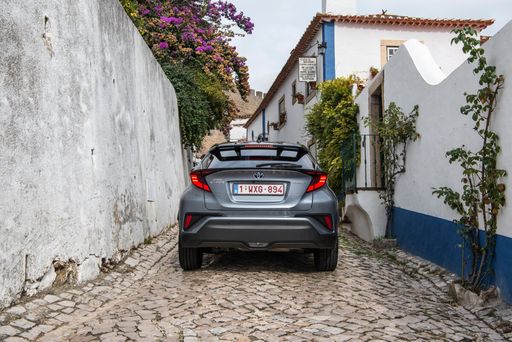 @ Toyota
@ Toyota
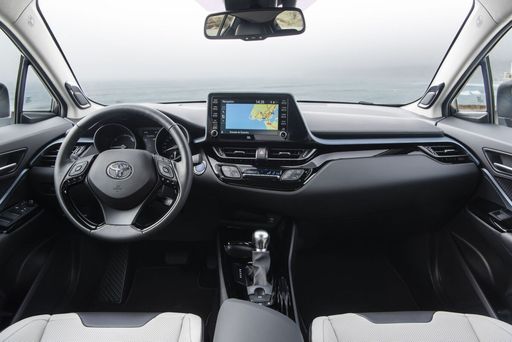 @ Toyota
@ Toyota

|

|
|
|
|
Costs and Consumption |
|
|---|---|
|
Price
31600 £
|
Price
29100 - 42800 £
|
|
Consumption L/100km
-
|
Consumption L/100km
0.8 - 5.1 L
|
|
Consumption kWh/100km
-
|
Consumption kWh/100km
-
|
|
Electric Range
233 km
|
Electric Range
68 km
|
|
Battery Capacity
-
|
Battery Capacity
-
|
|
co2
0 g/km
|
co2
17 - 115 g/km
|
|
Fuel tank capacity
-
|
Fuel tank capacity
43 L
|
Dimensions and Body |
|
|---|---|
|
Body Type
Cargo Van
|
Body Type
SUV
|
|
Seats
2
|
Seats
5
|
|
Doors
5
|
Doors
5
|
|
Curb weight
1640 kg
|
Curb weight
1505 - 1755 kg
|
|
Trunk capacity
-
|
Trunk capacity
350 - 447 L
|
|
Length
4460 mm
|
Length
4362 mm
|
|
Width
1720 mm
|
Width
1832 mm
|
|
Height
1875 mm
|
Height
1558 - 1564 mm
|
|
Payload
780 kg
|
Payload
375 - 425 kg
|
Engine and Performance |
|
|---|---|
|
Engine Type
Electric
|
Engine Type
Full Hybrid, Plugin Hybrid
|
|
Transmission
Automatic
|
Transmission
Automatic
|
|
Transmission Detail
-
|
Transmission Detail
CVT
|
|
Drive Type
Rear-Wheel Drive
|
Drive Type
Front-Wheel Drive, All-Wheel Drive
|
|
Power HP
136 HP
|
Power HP
140 - 223 HP
|
|
Acceleration 0-100km/h
-
|
Acceleration 0-100km/h
7.4 - 9.9 s
|
|
Max Speed
100 km/h
|
Max Speed
175 - 180 km/h
|
|
Torque
180 Nm
|
Torque
-
|
|
Number of Cylinders
-
|
Number of Cylinders
4
|
|
Power kW
100 kW
|
Power kW
103 - 164 kW
|
|
Engine capacity
-
|
Engine capacity
1798 - 1987 cm3
|
General |
|
|---|---|
|
Model Year
2023
|
Model Year
2024 - 2025
|
|
CO2 Efficiency Class
A
|
CO2 Efficiency Class
C, B
|
|
Brand
BYD
|
Brand
Toyota
|
BYD ETP3
A Revolution in Electric Transport: The BYD ETP3
The BYD ETP3, a breakthrough in the realm of electric light-commercial vehicles, epitomises innovation and efficiency. As a trailblazer from the Chinese automotive giant BYD, the ETP3 is designed to redefine the electric vehicle (EV) market, blending practicality with cutting-edge technology. This article delves into the technical details and groundbreaking innovations that make the BYD ETP3 an intriguing contender in the field of green transportation.
Powertrain and Performance: Setting New Standards
At the heart of the BYD ETP3 lies an electric motor delivering an impressive 136 PS (100 kW), with a rear-wheel drive configuration that ensures a robust performance. This setup promises a seamless driving experience augmented by a torque of 180 Nm, rendering the ETP3 adept at handling the rigorous demands of logistics and commercial tasks.
The vehicle's 233 km electric range reaffirms its position as a practical and efficient choice for city-based transport, reducing the need for frequent charging stops and enhancing productivity. The maximum speed of 100 km/h ensures the ETP3 remains steady and safe on urban roadways.
Innovative Design and Practicality
The BYD ETP3, while primarily focused on functionality, does not compromise on aesthetics. The sleek exterior, extending to 4,460 mm in length, 1,720 mm in width, and 1,875 mm in height, is thoughtfully designed to maximise both aerodynamic efficiency and load space. With a generous payload capacity of 780 kg, the ETP3 is poised to meet the diverse needs of urban businesses and tradespeople.
Built on a foundation of innovation, the vehicle employs a reduction gearbox to ensure smooth transitions, enhancing the overall driving experience. This technological innovation positions the ETP3 as an easy-to-handle and responsive option for urban and suburban environments.
A Commitment to Sustainability
One of the standout features of the BYD ETP3 is its commitment to environmental sustainability. With a CO2 emission rating of 0 g/km, it represents a significant step forward in reducing the carbon footprint of commercial vehicles. This remarkable achievement is complemented by its CO2 efficiency class rating of A, making it not only a financially savvy option in terms of operational costs but also an environmentally responsible choice.
The Comfort Line: Meeting Everyday Needs
The ETP3 comes equipped with the 'Comfort' trim, manifesting in a range of features designed to enhance user experience. With room for two seats, this vehicle balances free space for cargo with driver and passenger needs, ensuring comfort without compromising functionality.
Conclusion: BYD ETP3 - A Glimpse into the Future
The BYD ETP3 emerges as a frontrunner in the electric van market, combining efficiency, sustainability, and practical design. Its array of thoughtful innovations and technical specifications render it highly appealing for any business prioritising eco-friendly transport solutions. As the automotive industry continues to evolve, the ETP3 remains at the forefront, representing the future of logistics and urban transport.
Toyota C-HR
Revolutionising the Crossover Segment: The Toyota C-HR
The Toyota C-HR has firmly established itself as a standout contender in the compact crossover segment. Known for its distinct design and hybrid capabilities, the C-HR continues to prioritise innovation and efficiency. In this article, we delve into the technical details that make the 2024 iteration a compelling choice for discerning buyers.
Distinctive Design and Aerodynamics
The Toyota C-HR boasts a striking design that combines angular lines with modern aesthetics. This isn't merely for show; the design enhances aerodynamics, improving fuel efficiency and handling. With dimensions of 4362mm in length and a sophisticated structure, the C-HR strikes a balance between urban agility and on-road stability.
Impressive Hybrid Powertrains
The C-HR lineup offers innovative hybrid and plug-in hybrid drivetrain options. The full hybrid system is tailored for those who seek both economic and environmental benefits. It combines a petrol engine with an electric motor to deliver power outputs ranging from 140 to 223 PS, achieving remarkable fuel consumption rates from 0.8 to 5.1 L/100km. The 2.0 Plug-In Hybrid variant impresses with an electric range of 67 km, ideal for urban commuters.
Unmatched Efficiency and Performance
Acceleration figures for the C-HR range from 7.4 to 9.9 seconds to reach 0-100 km/h, ensuring a responsive driving experience. Maximum speeds between 175 and 180 km/h cater to those who appreciate a bit of zest on the open road. Coupled with CVT automatic transmission and both front-wheel and all-wheel-drive configurations, the C-HR adapts to various driving conditions with ease.
Advanced Technology and Features
Inside, the C-HR is equipped with the latest technology aimed at providing connectivity and comfort. The model hosts an array of features across its diverse trim levels, including Business Edition, Lounge, and the sporty GR SPORT. Each variant is designed to meet the demands of different lifestyles, ensuring there's a C-HR model to suit every taste.
Sustainability and Cost Efficiency
With CO2 emissions ranging from 19 to 115 g/km, the C-HR stands as a testament to Toyota's commitment to sustainability. Financially savvy consumers will also appreciate the running cost, with monthly expenses from €959 to €1204, and a cost per km as low as 38.4 cents. Such efficiency makes the vehicle an attractive option for eco-minded buyers.
Conclusion: A Forward-Thinking Choice
The 2024 Toyota C-HR embodies Toyota's forward-thinking approach to automotive innovation, blending eco-friendly hybrid technologies with stylish design and practicality. It offers a glimpse into the future of driving, where efficiency meets elegance. Whether you're a city dweller or an adventure seeker, the C-HR promises a driving experience that is both enjoyable and environmentally conscious.
Which drive types are available for the BYD ETP3?
Available as Rear-Wheel Drive.
The prices and data displayed are estimates based on German list prices and may vary by country. This information is not legally binding.
